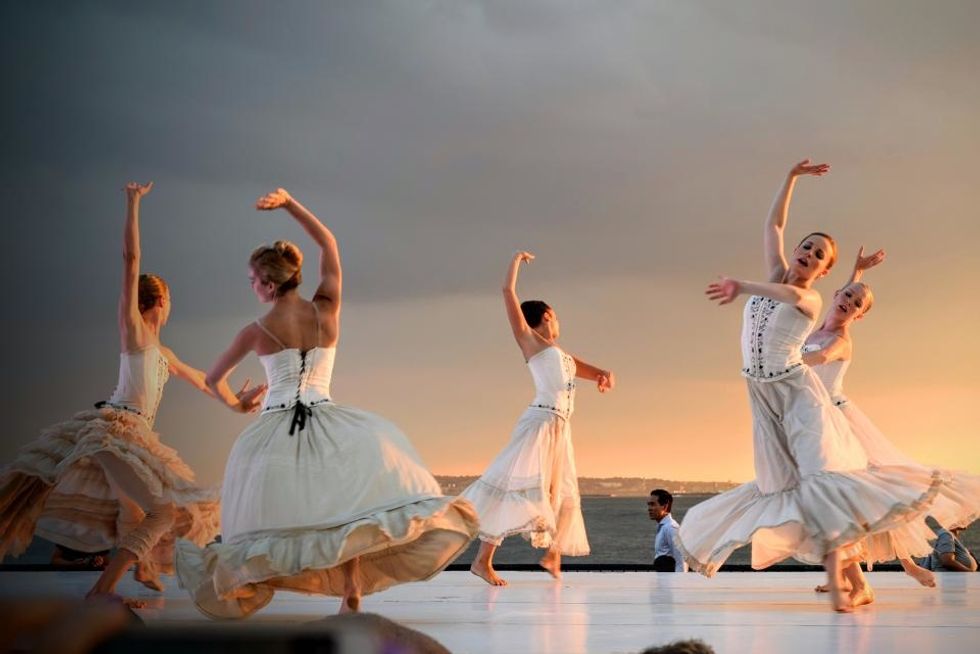Do Freelance Dancers Need A Union?
Now more than ever, dancers are speaking up against abuses of power that have long been considered foregone conclusions. In many cases, these dancers are backed by a union and protected by solidarity. Union representation has traditionally been the purview of established companies, but many dancers working today are freelancers. As dance employment shifts away from the company model, how can independent artists advocate for themselves? Could unionizing ensure them fair treatment? Is a union for freelance dancers even feasible?
What Protections Can a Union Provide?
The American Guild of Musical Artists is the primary union that represents concert dancers. Musical theater performers are usually represented by Actors’ Equity Association, while dancers who work in television and film fall under the Screen Actors Guild-American Federation of Television and Radio Artists. These unions negotiate with employers on behalf of dancers for contracts that provide guaranteed wages, overtime pay, regulated work hours, conflict resolution, and protection against discrimination and abuse. Unions are also responsible for enforcing these contracts.

Alvin Ailey dancers have been in AGMA negotiations this year. Photo via Instagram.
When asked what attracts them to the idea of unionizing, many freelance dancers cite wages, health care and safe working conditions among their primary concerns. Union rules can have particular benefits for performers’ health: AGMA dance contracts, for example, include stipulations that mandate a five-minute break every hour and call for the employer to provide daily company class. While choreographers might feel that warm-up time and regular breaks infringe on limited resources, those perks can go a long way in protecting dancers’ bodies and boosting morale.
Is It Possible for Freelance Dancers?
Organizing is challenging for freelance dancers because of the scarcity of funding, decentralization of employment and sheer heterogeneity of jobs. Because of the industry’s competitive nature, some dancers also worry that unionizing would make them difficult to employ. A minimum wage could be a particularly tricky issue: Faced with a sudden hike in cost, choreographers might choose dancers who are not unionized to stay within a tight budget. (On the other hand, the current lack of a minimum wage privileges dancers who can afford to work for free.)

It’s possible that freelance dancers could be represented by AGMA. Photo by Tim Gouw via StockSnap
AGMA recognizes that the landscape is shifting. Griff Braun, the principal AGMA negotiator for both Alvin Ailey American Dance Theater and American Ballet Theatre, says that opening AGMA membership to freelancers—while complex—is conceivable. “In this world where there are so many freelancers in every industry, unions are seeking ways to organize and rep them,” he says. “We want to find ways to adapt to dancers’ needs.”
How would it work? Without one central employer, bargaining would function differently than a company contract. A floating contract that dancers take from job to job could be one solution. While sweeping changes like a minimum wage might not be possible yet, something as simple as contract enforcement could make a big difference.
Are There Alternatives to Unionizing?
In 2002, after many years of brainstorming, a group of New York City–based artists published The Dancers Forum Compact. This document emphasizes clear communication around topics like pay, scheduling, safety, costuming, billing and credit. Some choreographers still follow The Compact’s guidelines today, though its use has waned. Unlike a union, The Compact is not set up for collective bargaining or contract enforcement.

via wagerage.blogspot.com
Another alternative to unionizing could be to establish a program like Working Artists and the Greater Economy. W.A.G.E. publicly certifies employers who meet their minimum payment standards. In dance, grades could be granted to choreographers based on their compliance with a host of fair-labor practices. Dancers might be more inclined to work with compliant employers, funders and presenters would have a clearer understanding of what dancers need, and early-career choreographers would have something tangible to reach for.
What Are The Limitations of Unions?
Union membership alone does not guarantee protection. In order to receive support, dancers must report contract infractions—which even unionized dancers might avoid for fear of backlash. While a union alone cannot shift an entire culture, it can help dancers organize to set new standards within the field.




